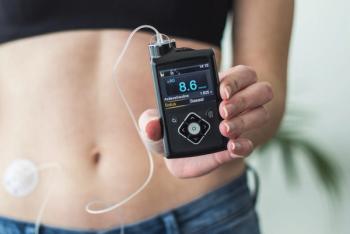
Pharmacies bemoan generics' shrinking margins
Generics and pharmacy's bottom line.
Community pharmacist Jerry Whitman, R.Ph., remembers the days of 50% margins on generics. "Generics used to be our bread and butter and we can still make money on them, but the problem today is the way many third-party contracts are structured-they reimburse average wholesale price minus 35% for generics."
Independents like Whitman, as well as the nation's largest pharmacy chains, have witnessed lower profits in recent years partly due to shrinking margins on generics that are a result of ever-decreasing third-party reimbursement rates.
Between now and 2010, an estimated 70 brand-name drugs will go off patent, accounting for nearly $50 billion in worldwide sales.
Growing demand
Generic drugs, particularly generic cholesterol agents, calcium channel blockers, selective serotonin reuptake inhibitors, and proton pump inhibitors, are continuing to capture more market share.
New generic entrants for osteoporosis agent alendronate (Fosamax, Merck) hit the market this year, with low-cost versions available in February.
"We're doing very well with generic Fosamax," admitted Whitman. "As soon as it came in, we got rid of the brand name and everyone got switched right over. If I was making seven dollars on Fosamax, I'm making about $20 on generic Fosamax and I'm paying a third of the price."
Whitman added that the margin will not last on generic Fosamax once others enter the market. "The key with a new generic is filling as many prescriptions as you can and as quickly as you can before the pricing changes."
Time is running out on patents set to expire in several months for other widely dispensed drugs, including schizophrenia agent risperidone (Risperdal, Janssen), asthma medication fluticasone/salmeterol (Advair, GlaxoSmithKline), and antidepressant venlafaxine (Effexor XR, Wyeth).
But the biggest prizes for the generic drugmakers come in 2011 when generic versions of the world's largest-selling drug atorvastatin (Lipitor, Pfizer) become available. That year, two other mega brands will face generic copies: clopidogrel (Plavix, Bristol-Myers Squibb and Sanofi-Aventis) and olanzapine (Zyprexa, Lilly).
The Generic Pharmaceutical Association foresees strong demand for generics in the future. "Fueling continued growth will be the strong utilization of generics through the Medicare prescription drug benefit (Part D), an aging population needing affordable medicines, and several brand products that will be coming off patent during the next few years," said Kathleen Jaeger, GPhA's president and CEO.
Medicare Part D, the federal program to subsidize the cost of prescription drugs of Medicare recipients, has increasingly relied on generics to curb costs. In the first full year of the Medicare Part D program's implementation, generics accounted for 61% of all prescriptions dispensed. This is partly due to efforts by the program's administrator, the Centers for Medicare and Medicaid Services, to encourage Medicare recipients to use generics as a way to lower their out-of-pocket costs for prescription drugs.
Newsletter
Pharmacy practice is always changing. Stay ahead of the curve with the Drug Topics newsletter and get the latest drug information, industry trends, and patient care tips.




































































































































